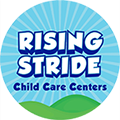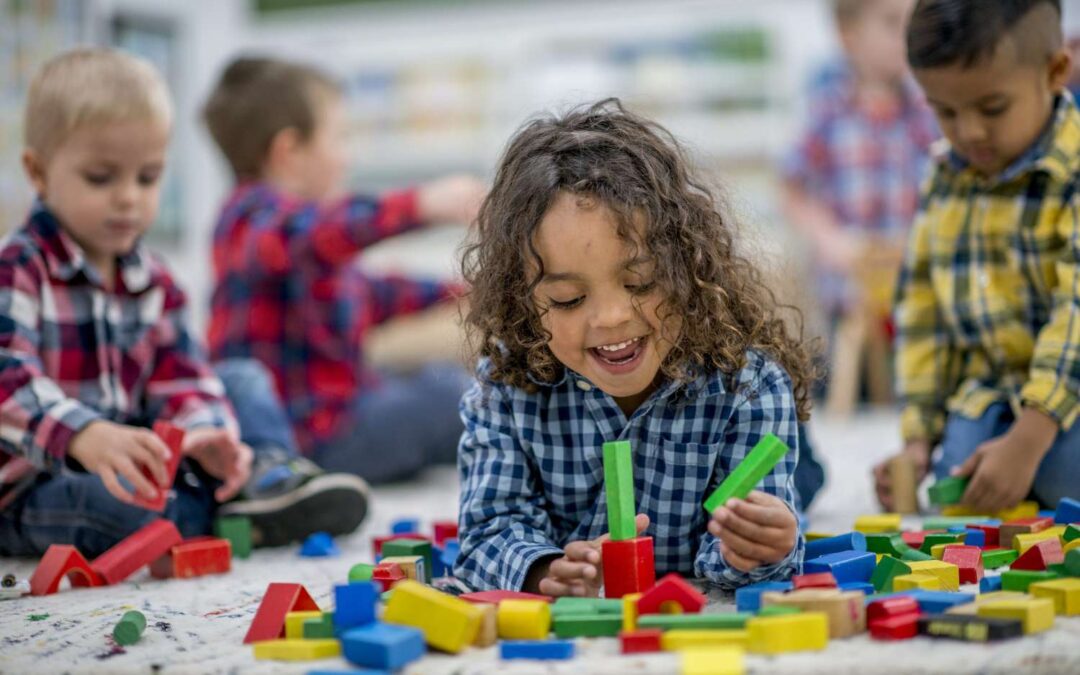Parents often hear of the importance of play in preschool. But playing with dolls and blocks seems to have little to do with the academic knowledge that children will need to succeed in kindergarten. So why is it so important?
Play is the foundation for all learning for young children, and giving your child the time and a few basic toys can provide her with a variety of valuable learning opportunities. Children’s play unlocks their creativity and imagination, and develops reading, thinking, and problem solving skills as well as further develops motor skills. It provides the base foundation for learning.
Play can also help children develop social skills. They learn how to interact with others, share and take turns, and resolve conflicts. Playing with other children allows them to experiment with different roles and see how they fit into various social situations.
In addition to emotional and social development, play helps children develop cognitive skills. They learn how to think abstractly, solve problems, and create new ideas. All these skills are essential for their academic success in the future
Types of play that are beneficial for development
There are many types of play that are beneficial for different aspects of a child’s development. Some of the most important types of play include:
Language and Vocabulary Development
When playing with other children or adults, vocabulary and language skills are fostered. Your child will listen and learn the language she hears without even realizing. Children will learn to use language to communicate meaning as well as picking up new words and hearing the grammatical structure of the English language.
- Vehicles and Animals. Playing with cars, trucks and trains as well as animals provides for many new vocabulary words as children learn the names of each, what they do, what they eat or where you can find them. Additionally, children and adults can create all kinds of scenarios that the vehicles or animals might find themselves in, providing for further language and vocabulary development.
- Dollhouse and Dolls. Playing with a dollhouse or dolls allows your child to reenact what happens in her everyday life, using the words and phrases she hears. You are likely to hear your own words come out of her mouth as she recreates events that have happened, perhaps with an outcome more suited to her liking.
Imagination and Creativity
In our fast paced and high tech society, children have fewer and fewer opportunities to use and develop their creativity. Children who are not given frequent opportunities to play may have a difficult time entertaining themselves as they simply do not know what to do without instruction. By providing opportunities for open ended play, your child will automatically get her creative juices flowing, and the possibilities are endless.
- Dramatic Play. provide a few props such as dishes and play food, empty food boxes and a cash register or stuffed animals and a doctor’s kit, and your child will be transported into a different place! Watch and be amazed at what she will come up with as she plays.
- Craft Supplies. Without a specific project complete, provide your child with a variety of craft supplies such as markers and crayons, scraps of fabric or paper, empty boxes or containers, glue, buttons and stickers. Allow her to create anything she likes and watch her inner artist emerge!
The Importance of Unstructured Playtime
One of the most important aspects of play is to make sure it is often unstructured—this means that there is no specific goal or outcome that the child needs to achieve. This type of play is crucial for children’s development, as it allows them to explore new ideas and figure out how to solve problems independently.
During unstructured playtime, children can pursue their own interests and activities, which helps them use their imaginations and creativity. It also allows them to practice new skills they are learning, such as negotiation and cooperation. Unstructured play is a time for you to put your “teacher” hat aside and allow your child to do it their way. It’s ok if they call a horse a cow. Make-believe is a vital part of childhood.
Problem Solving and Mathematics
Children can solve complex problems that arise as they play and learn a few mathematical principals as well. Blocks and puzzles are excellent “basics” to provide your child with many opportunities to foster these important skills.
- Blocks. Playing with blocks provides for many problem solving scenarios. How can we make it balance? How tall can we make this tower? Can we build a castle? Children also learn some basic math concepts with the various shapes and sizes of the blocks.
- Puzzles. When trying to make puzzle pieces fit, children are gaining important math and problem solving experience. Learning a bit about sizes (is the piece too big for that spot?) and shapes (does the shape of the piece look the same as the hole?) You can encourage this learning by engaging in conversations as your child plays. Your child will also gain an important sense of accomplishment as her practice leads to a completed puzzle in the end.
Gross and Fine Motor Development
Gross motor skills involve the large muscles of the legs and arms while fine motor development is building the muscles of the hands that will be used for writing. Play can provide many opportunities to work on strengthening these muscles without your child even being aware of it!
- Stringing Beads and Lacing. Giving children beads and plastic tipped laces provide a fun way to work on fine muscle control. Your child can create a beautiful necklace while strengthening the fine motor muscles. Lacing cards or child safe needles and burlap will also provide fun “sewing” projects for young children.
- Balls and Balance Beams. Kicking balls and walking on balance beams can help your child become more coordinated. Get outside and kick a ball around, create a goal area to make it a game. Anytime you see a narrow brick wall or wooden plank, give your child some assisted practice at balancing.
Gather up the toys you have around the house and make it a point to provide ample time for play. Playing around with your child is sure to provide many wonderful childhood memories and reap some great educational benefits as well!
Fun ways to get your child moving
Getting your child moving is not only good for their physical health but can also have many benefits for their mental health. Here are a few ideas for fun ways to play with your child:
- Go on a nature hike and look for bugs, rocks, and plants. Walks in nature offer a variety of opportunities for sensory exploration as well as physical activity.
- Have a picnic in the park.
- Visit the zoo or a petting zoo.
- Build a sandcastle at the beach.
- Have a pretend tea party.
- Play tag, catch, hopscotch, or hide-and-seek. These games are great for improving reflexes and helping kids burn off some energy!
- Ride bikes or go for a walk.
- Make homemade pizzas, cookies, or other snacks together.
- Draw pictures or make sculptures out of modeling clay.
- Sing songs and dance around the house. Dancing is a great way to have fun while getting active! Plus, it helps improve coordination and balance skills.
Conclusion
Play is essential to a child’s development and should be encouraged as much as possible. It helps them learn, grow, and develop in ways that cannot be replicated in any other setting. By taking the time to play with your child, you are opening a world of opportunities for them to explore and discover new things about themselves and the world around them. The benefits of play are limitless, so get out there and have some fun!

